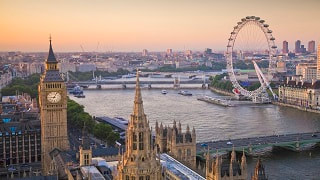|
Related Topics |
|
We compare the population size of some of South Africa's biggest cities/ metropolitan areas to that of some of Europe's biggest cities and metros.
While South Africa's cities and metros are big compared to a lot of those in Europe, a very large chunk of South Africa's population is found in a small number of large cities. |
So South Africa has a few large cities?
While South Africa has a few large cities/metropolitan areas compared to that of Europe, one has to remember a very large chunk of South Africa's population is concentrated in a few large cities/metros as shown in the graphic below.
The city population sizes for the European cities were obtained from Eurostat for the year 2017. Thus cities for which 2017 data was not available, were excluded from the graphic above. While South Africa does not published city populations annually, we derived/estimated city sizes based on South Africa's economically active population per cit, which South Africa publishes every quarter with the quarterly labour force survey. We estimated the size of South Africa's economically active population as a percentage of South Africa's total population. We then used this ratio to derive a city population estimate based on each city/metro's economically active population. The bar chart below shows the city/metro population data as both obtained from Eurostat, and our estimated city populations based on Statistics South Africa, quarterly labour force data.
The light blue bars represent European cities/metros while the light brown bars represent South African cities/metros. And as can be seen from the graphic the only city in Europe bigger than Johannesburg is that of London, with a population of 8.79million people it is 56.3% bigger than that of Johannesburg, or stated differently there are 3.17million more people living in London than there is living in Johannesburg. Johannesburg's population on the other hand is 29% larger than that of the City of Cape Town, with its population of 4.34 million people. City of Cape Town's population is around 13% larger than that of Ekurhuleni (which contains a large number of smaller cities such as Kempton Park, Benoni, Boksburg, Springs etc). London's population is 2.4 times the size of eThekhwini (Durban), with Durbans population coming in at 3.66 million people.
Interestingly not one of the German cities are larger than Johannesburg, City of Cape Town, Ekurhuleni, City of Tshwane or eThekhwini, yet Germany has a population of 82 million people, roughly 24 million people more than that of South Africa. Even the United Kingdom only has one city larger than South Africa's big cities/metro's yet its population is almost 8 million more than that of South Africa. Granted the United Kingdom covers various countries, their overall land size is a lot smaller than that of South Africa, and even with that their cities are not to clustered. This speaks to the earlier point about South Africa's population being highly clustered around big cities. Whereas in Germany the population is spread out far more evenly across various cities in the country.
The light blue bars represent European cities/metros while the light brown bars represent South African cities/metros. And as can be seen from the graphic the only city in Europe bigger than Johannesburg is that of London, with a population of 8.79million people it is 56.3% bigger than that of Johannesburg, or stated differently there are 3.17million more people living in London than there is living in Johannesburg. Johannesburg's population on the other hand is 29% larger than that of the City of Cape Town, with its population of 4.34 million people. City of Cape Town's population is around 13% larger than that of Ekurhuleni (which contains a large number of smaller cities such as Kempton Park, Benoni, Boksburg, Springs etc). London's population is 2.4 times the size of eThekhwini (Durban), with Durbans population coming in at 3.66 million people.
Interestingly not one of the German cities are larger than Johannesburg, City of Cape Town, Ekurhuleni, City of Tshwane or eThekhwini, yet Germany has a population of 82 million people, roughly 24 million people more than that of South Africa. Even the United Kingdom only has one city larger than South Africa's big cities/metro's yet its population is almost 8 million more than that of South Africa. Granted the United Kingdom covers various countries, their overall land size is a lot smaller than that of South Africa, and even with that their cities are not to clustered. This speaks to the earlier point about South Africa's population being highly clustered around big cities. Whereas in Germany the population is spread out far more evenly across various cities in the country.
